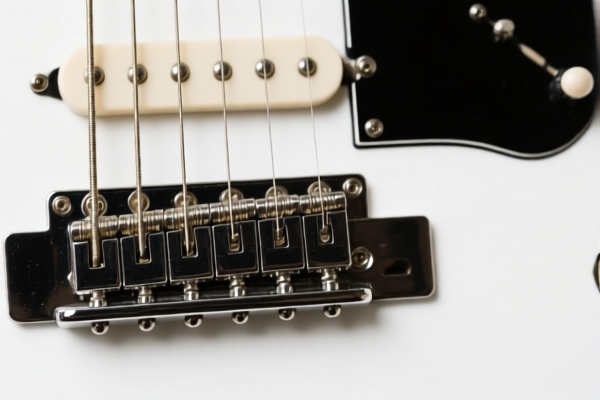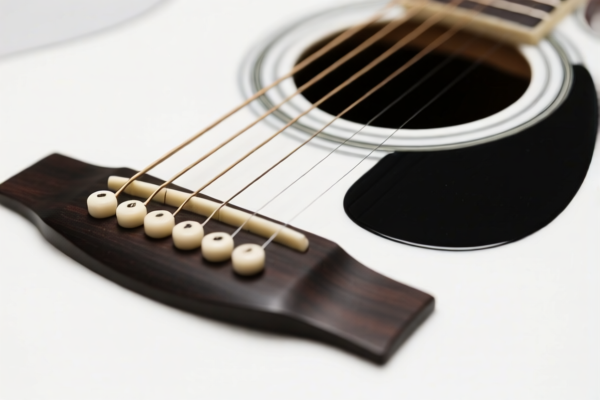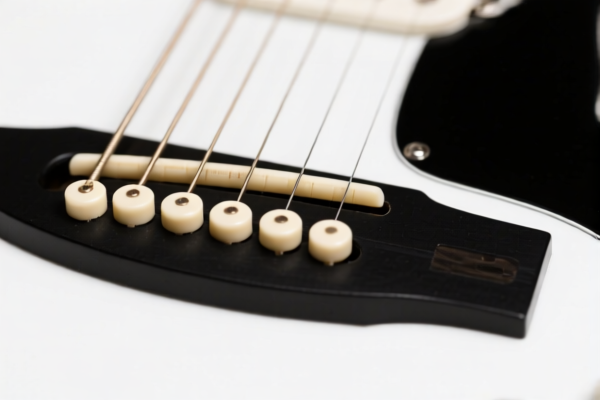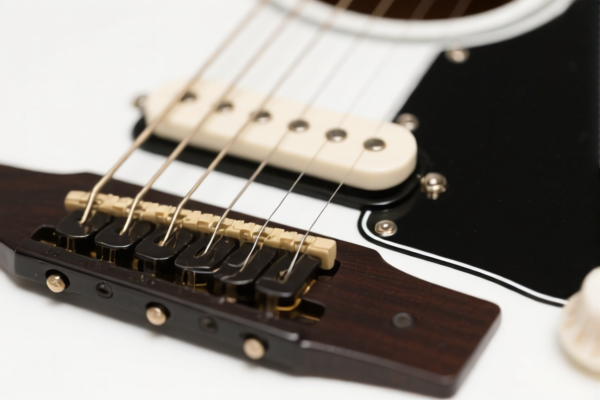| HS Code | Official Doc | Tariff Rate | Origin | Destination | Effective Date |
|---|---|---|---|---|---|
| 9202902000 | Doc | 42.0% | CN | US | 2025-05-12 |
| 9202904000 | Doc | 46.2% | CN | US | 2025-05-12 |
| 9209928000 | Doc | 42.1% | CN | US | 2025-05-12 |
| 9209998000 | Doc | 42.8% | CN | US | 2025-05-12 |
| 8306100000 | Doc | 35.8% | CN | US | 2025-05-12 |
| 8306290000 | Doc | 30.0% | CN | US | 2025-05-12 |
| 8308909000 | Doc | 57.7% | CN | US | 2025-05-12 |
| 8487900080 | Doc | 83.9% | CN | US | 2025-05-12 |
| 8487900040 | Doc | 58.9% | CN | US | 2025-05-12 |
| 7326908688 | Doc | 82.9% | CN | US | 2025-05-12 |
| 7326908605 | Doc | 82.9% | CN | US | 2025-05-12 |




Guitar Bridge
A guitar bridge is a fundamental component of both acoustic and electric guitars, serving as the termination point for the strings and transmitting their vibrations to the guitar's body, ultimately producing sound. Its design significantly impacts the instrument's tone, sustain, and playability.
Material
Bridges are constructed from a variety of materials, each contributing unique sonic characteristics:
- Wood: Commonly used in acoustic guitars, materials like rosewood, ebony, maple, and bone influence warmth, resonance, and sustain.
- Metal: Predominantly found on electric guitars, alloys like steel, zinc, aluminum, and brass affect brightness, clarity, and attack.
- Composite Materials: Increasingly used in modern guitars, materials like Tusq (synthetic bone) offer consistent tone and reduced string wear.
Purpose
The primary functions of a guitar bridge are:
- String Termination: Securely anchors the strings at the body of the guitar.
- Vibration Transmission: Transfers the strings’ energy to the soundboard (acoustic) or body (electric), amplifying the sound.
- Action Adjustment: Allows for the setting of string height (action), influencing playability and intonation.
- Intonation Control: Enables precise adjustment of string length to ensure accurate pitch across the fretboard.
Function
The bridge works by:
- Receiving Vibration: Strings transmit their oscillations to the saddle(s) of the bridge.
- Transferring Energy: The saddle(s) couple these vibrations to the soundboard or body.
- Amplification: The soundboard (acoustic) or body (electric) resonates, amplifying the sound.
- Sustain & Tone Shaping: The bridge material and design influence how long the sound sustains and its overall tonal character.
Usage Scenarios
The appropriate bridge type depends on the guitar's style and intended use:
- Acoustic Guitars: Bridges are integral to the guitar’s natural resonance and projection.
- Electric Guitars: Bridges often incorporate tremolo systems for pitch bending and vibrato effects.
- Archtop Guitars: Floating bridges are common, allowing for a more open sound and complex tonal possibilities.
- Resonator Guitars: Bridges are designed to transfer vibrations to the resonator cone, producing a distinct metallic tone.
Common Types
- Acoustic Bridges:
- Standard/X-Brace: Most common type, offering balanced tone and projection.
- Pin Bridges: Utilize pins to secure the strings, allowing for easy string changes.
- Tie Bridges: Strings are tied directly to the bridge, providing a traditional aesthetic and enhanced sustain.
- Electric Bridges:
- Hardtail: Fixed bridge, offering stability, sustain, and accurate intonation.
- Tremolo (Vibrato): Allows for pitch bending effects. Common types include:
- Vintage-Style Tremolo: Classic design, offering smooth vibrato.
- Floyd Rose: Locking system providing exceptional tuning stability for aggressive playing styles.
- Bigsby: Offers a gentle, sweeping vibrato effect.
- Tune-o-matic: Popular on archtop and semi-hollow body guitars, known for its adjustability and clarity.
- Stratocaster-Style: Synchronized tremolo system, offering versatile vibrato effects.
- Floating Bridges: Not glued to the body, allowing for greater resonance and tonal flexibility. Common on archtop guitars.
A guitar bridge is a component attached to the body of a guitar that supports the strings and transmits their vibrations to the guitar's body, influencing the instrument's tone and sustain. It can be made of various materials like wood, metal, or composite materials. It is a crucial part for both acoustic and electric guitars.
Here are relevant HS codes based on the provided reference material:
- 9202902000: Other string musical instruments (for example, guitars, violins, harps): Other: Guitars: Valued not over $100 each, excluding the value of the case. This code applies to guitars themselves, and a bridge is a component of a guitar. If the guitar's value is $100 or less (excluding the case), this code may be relevant.
- 92: Musical instruments; parts and accessories of such instruments.
- 02: String musical instruments.
- 90: Other.
- 20: Guitars.
- 9202904000: Other string musical instruments (for example, guitars, violins, harps): Other: Guitars: Other. This code also applies to guitars, but for those valued over $100.
- 92: Musical instruments; parts and accessories of such instruments.
- 02: String musical instruments.
- 90: Other.
- 40: Guitars.
- 9209928000: Parts (for example, mechanisms for music boxes) and accessories (for example, cards, discs and rolls for mechanical instruments) of musical instruments; metronomes, tuning forks and pitch pipes of all kinds: Other: Parts and accessories for the musical instruments of heading 9202: Other. This code specifically covers parts and accessories for instruments classified under heading 9202 (string instruments like guitars).
- 92: Musical instruments; parts and accessories of such instruments.
- 09: Parts and accessories.
- 92: Parts and accessories for the musical instruments of heading 9202.
- 80: Other.
Tax Rate Information (based on the reference material):
- 9202902000: Total tax rate of 42.0% (Base tariff: 4.5%, Additional tariff: 7.5%, Additional tariff after 2025.4.2: 30.0%).
- 9202904000: Total tax rate of 46.2% (Base tariff: 8.7%, Additional tariff: 7.5%, Additional tariff after 2025.4.2: 30.0%).
- 9209928000: Total tax rate of 42.1% (Base tariff: 4.6%, Additional tariff: 7.5%, Additional tariff after 2025.4.2: 30.0%).
Important Note: The applicable tax rate will depend on the date of import. After April 2, 2025, the additional tariff will increase to 30.0% for all listed codes.
Customer Reviews
No reviews yet.